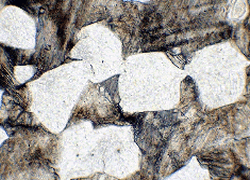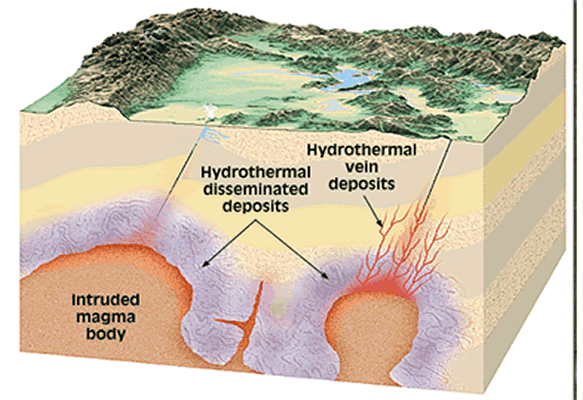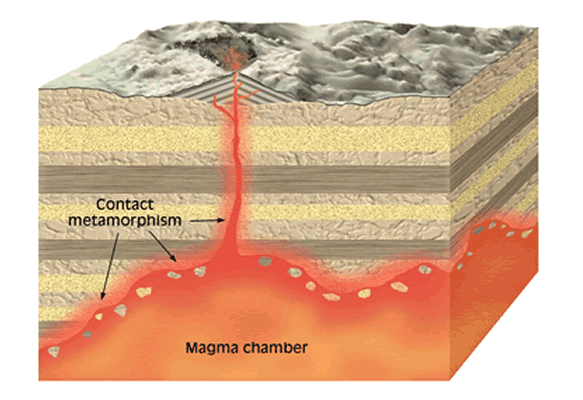 |
| Type of Rock: | Parent rock: | Texture: | Description: |
| Metarmorphic rock | Limestone and dolostone. | Non-foliated | Composed of interlocking calcite grains. |
|
THIN SECTION A thin section is made by grinding down a slice of rock which has been glued to a glass slide until it reaches a thickness of about 0.03mm (30 microns). At this thickness most minerals become more or less transparent and can therefore be studied by a microscope using transmitted light. |
 |
|
AGENTS OF METAMORPHISM - The agents of metamorphism include heat, pressure (stress), and chemically active fluids. During metamorphism, rocks are often subjected to all three metamorphic agents simultaneously. However, the degree of metamorphism and the contribution of each agent vary greatly from one environment to another. In low-grade metamorphism, rocks are subjected to temperatures and pressures only slightly greater than those associated with the lithification of sediments. High-grade metamorphism, on the other hand, involves extreme tectonic forces and temperatures close to those at which rocks melt. High pressure and temperature can be generated by: 1. burial during sedimentary deposition 2. plate motion against each other |
| Chemical Activity as a Metamorphic Agent - Chemically active fluids also enhance the metamorphic process. Most commonly, the fluid is water containing ions in solution. Water is plentiful, because some water is contained in the pore spaces of virtually every rock. In addition, many minerals are hydrated (have water bound chemically) and thus contain water within their crystalline structures. How Metamorphism Alters Rocks The metamorphic process causes many changes in rocks, including increased density, growth of larger crystals, reorientation of the mineral grains into a layered or banded texture, and the transformation of low temperature minerals into high-temperature minerals. |
 |
| Heat as a Metamorphic Agent - The most important agent of metamorphism is heat because it provides the energy to drive the chemical changes that result in the recrystallization of minerals. Heat my derived from intrusion of molten material rising from below. The effects of this contact metamorphism are most apparent when it occurs at or near the surface where the temperature contrast between the magma and the host rock is most pronounced. |
 |
| Pressure and Stress as Metamorphic Agents - Pressure, like temperatures, also increases with depth. Buried rocks are subjected to the force, or stress, Pressure (stress)as metamorphic agent exerted by the load above. This confining pressure is analogous to water pressure where the force is applied equally in all directions. The deeper you go in the ocean, the greater the pressure on all sides. The same is true for rocks at depth. These forces, which are unequal in different directions, are called differential stresses. Most often these differential forces are compressional and act to shorten a rock body. In some environments, however, the stresses are tensional and tend to elongate, or pull apart, the rock mass. Stretched pebble conglomerate as a result of differential stress Differential stress can also cause a rock to shear. |
 |